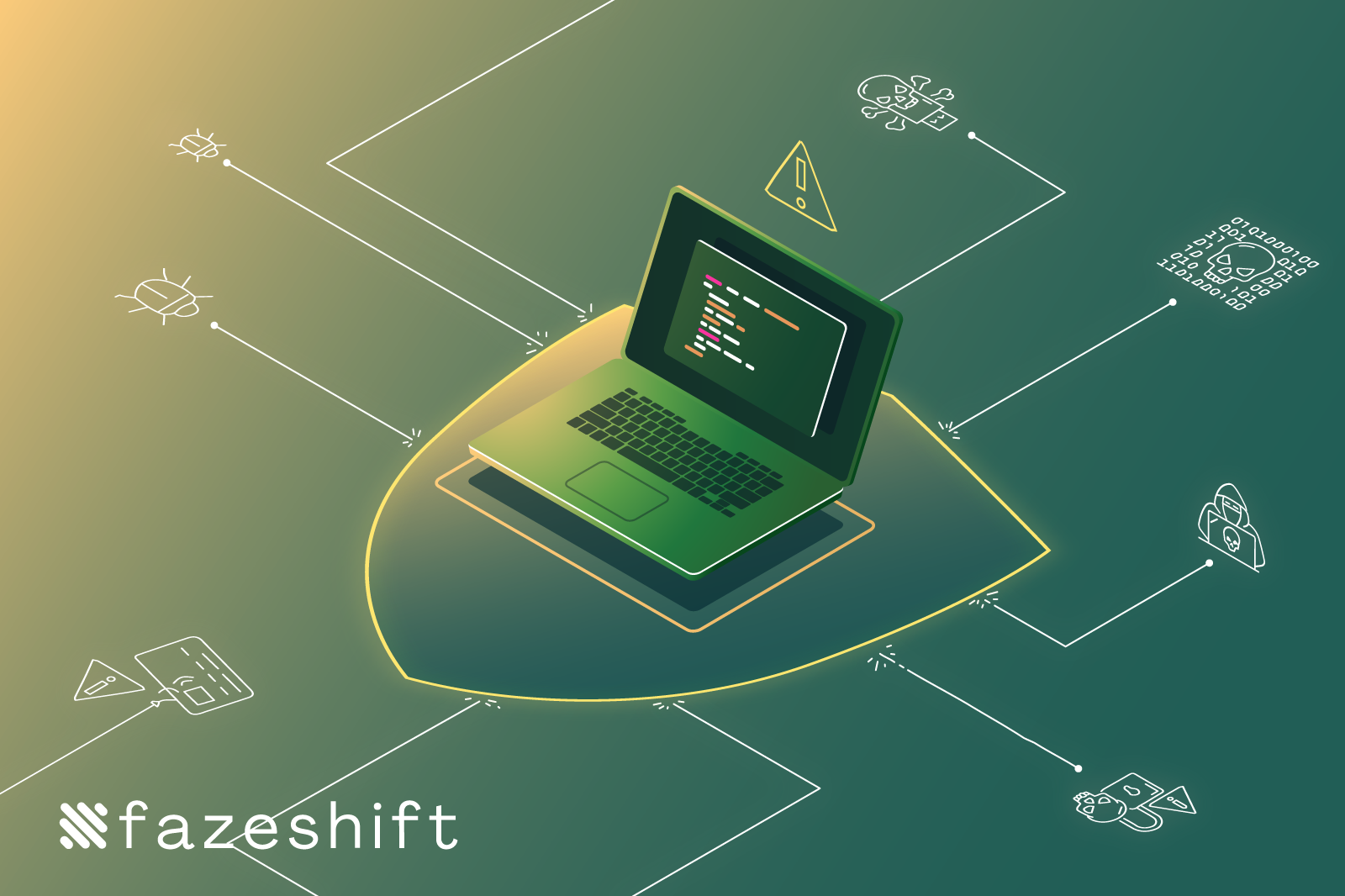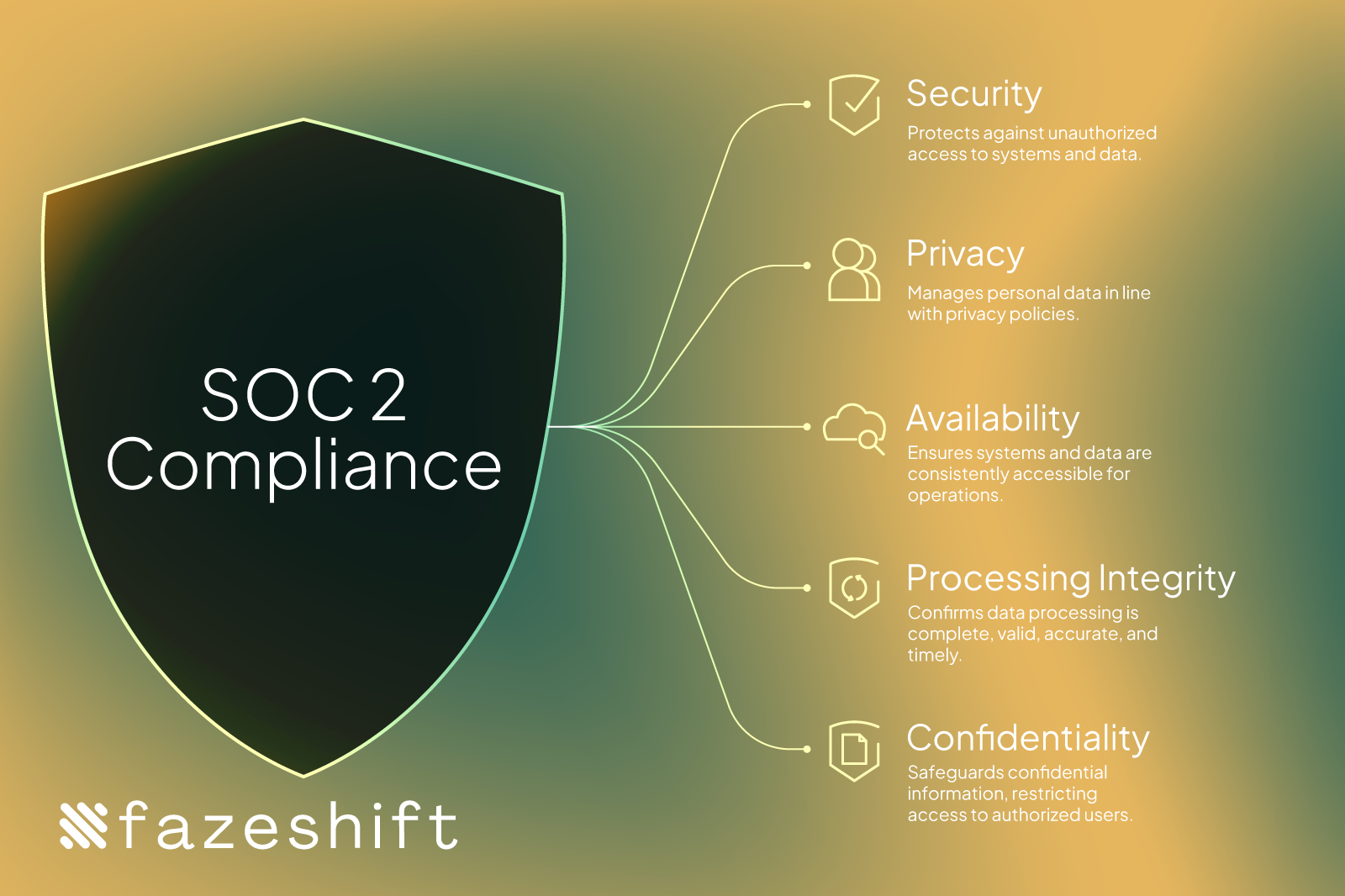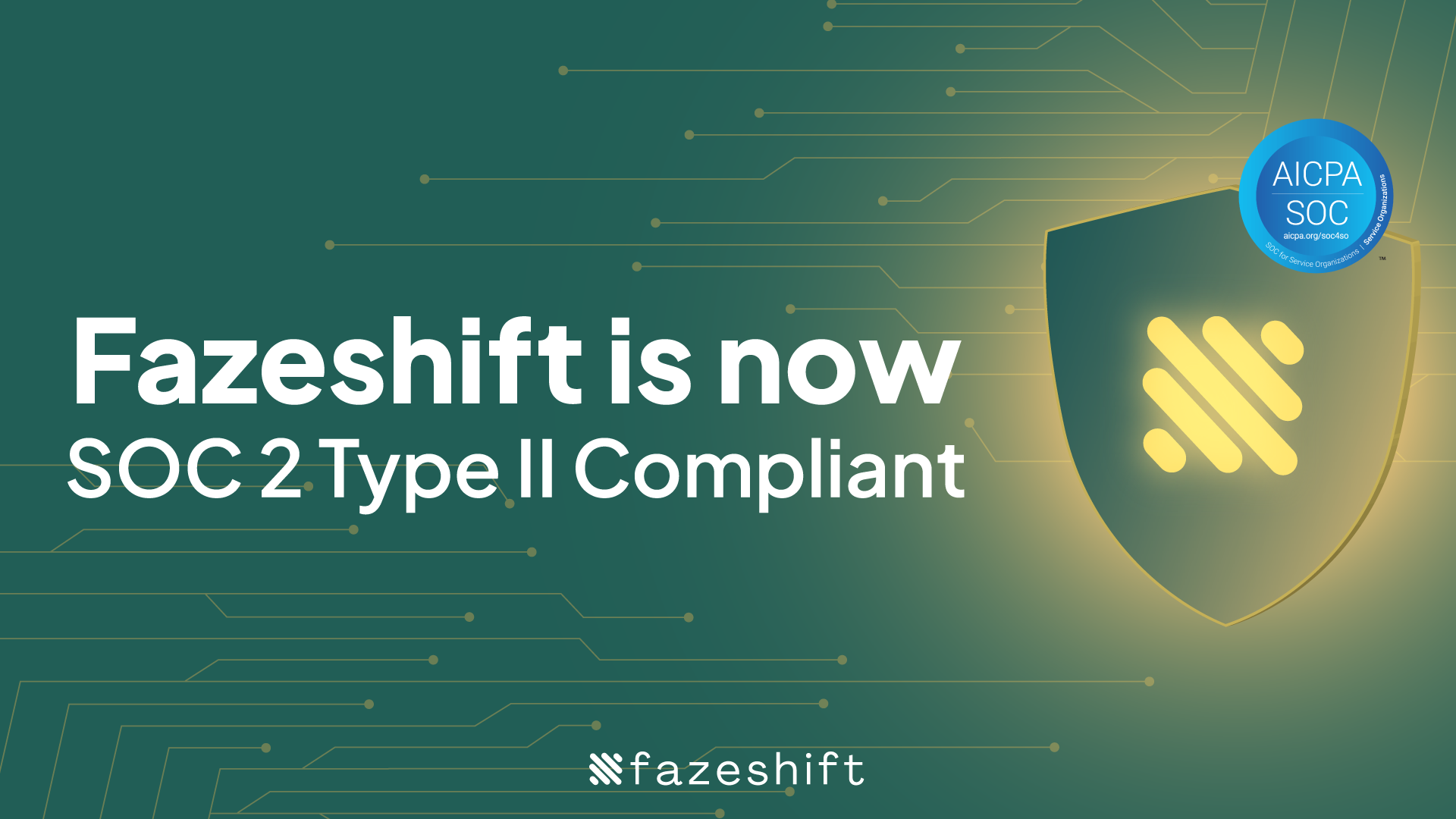Why SOC 2 Compliance Matters in Accounts Receivable Automation

At a time when data breaches are no longer rare, the information your organization stores, processes, and shares with third-party vendors needs to be safe and secure.
Your company goes to great lengths to protect customer data, so it only makes sense for your accounts receivable team to use trusted vendors who share that same level of commitment.
Determining whether a software tool like Fazeshift has secured SOC 2 Type 1 and Type 2 compliance is a key step in evaluating whether it meets your company’s security standards.
In this blog post, we’ll talk about the differences between SOC 2 Type 1 and 2 compliance, as well as how you can select a vendor that’s right for your organization.
Key Takeaways:
- SOC 2 compliance for a vendor or service provider involves following cybersecurity principles and standards set by the Association of International Certified Professional Accountants.
- SOC 2 compliance comes in two types, which generally differ based on what’s examined in a cybersecurity audit and the length of time associated with it.
- An SOC 2 Type 1 audit determines the effectiveness of a company’s cybersecurity controls at a specific point in time, whereas Type 2 focuses on how well their systems or controls perform over time — generally 3 to 12 months.
- An SOC 2 attestation written by a qualified auditor is the best way for third-party vendors to show that their company’s cybersecurity controls are robust and can adequately safeguard any data you share with them.
- Many third-party vendors have SOC 2 Type 1 and Type 2 attestations, but it’s also common for companies to only have one.
- Fazeshift’s Accounts Receivable Automation platform complies with SOC 2 Type 1 and Type 2.
The difference between SOC 2 Type 1 and Type 2
On the whole, SOC 2 compliance ensures that a service provider is adhering to an established set of cybersecurity principles and standards from the Association of International Certified Professional Accountants.
This framework, known as the Trust Services Criteria, outlines how service providers should safeguard, transmit, process, store, maintain, and disclose the data they collect and use.
As a part of the SOC 2 compliance process, a qualified service auditor or CPA firm reviews a service provider’s cybersecurity controls to ensure that best practices are implemented and followed.
SOC 2 compliance comes in two types, which generally differ based on what’s examined in a cybersecurity audit and the length of time associated with it.
For an SOC 2 Type 1 review, an auditor will gauge the effectiveness of a company’s cybersecurity controls at a specific point in time. Case in point: An auditor will examine the security controls that a company claims are in place on July 1, 2025 and confirm that they are suitably designed and implemented on that date.
An SOC 2 Type 2 review, meanwhile, is a more thorough audit that assesses how effective a service provider’s security controls are over time. For instance, an auditor conducting an SOC 2 Type 2 audit would review logs, incidents, and evidence to confirm that a service provider’s cybersecurity controls operated effectively from Jan. 1 to June 20, 2025.

SOC 2 compliance in Accounts Receivable Automation
Since AR teams deal with sensitive customer data, such as names, contact information, and banking details, your third-party software vendors should be well equipped to manage a wide range of cybersecurity threats
An SOC 2 attestation written by a qualified auditor is the best way for a vendor to show that their company’s controls are in top shape and can adequately safeguard any data they handle.
An attestation, typically valid for a 12-month period, is provided after a company has been reviewed, audited, and found to have no outstanding cybersecurity issues.
Since there are two types of SOC 2 compliance, auditors will issue separate attestations based on what kind of review was done.
Many third-party vendors have attestations for SOC 2 Type 1 and Type 2 compliance, but it’s also common for companies to only have one. [Fazeshift, for the record, complies with SOC 2 Type 1 and Type 2.]

Prioritize SOC 2 compliance for third-party vendors
When your AR function depends on external software, trust becomes currency.
A vendor’s SOC 2 attestation, especially a Type 2 report, offers peace of mind that their security practices aren't just well-designed, but actually work over time.
With cybersecurity threats continuing to evolve, SOC 2 compliance isn’t just a technical requirement — it’s a competitive advantage.
Need an accounts receivable automation tool that has achieved SOC 2 Type 1 and 2 compliance?
Chat with our sales team today. See how Fazeshift’s AI agents can automate everything that your AR team is doing today and work on top of your existing tech stack.

